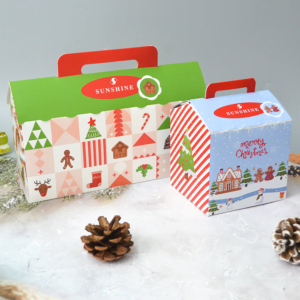When it comes to the world of confectionery and baked goods, presentation is just as important as taste. Cake box packaging plays a crucial role in not only preserving the freshness of your delectable creations but also in making a lasting impression on your customers. In this comprehensive guide, we will delve into the key considerations for cake box packaging, exploring everything from materials and design to sustainability and marketing strategies.
Introduction
Cake box packaging is more than just a container; it’s a reflection of your brand’s identity and the quality of your product. Whether you run a bakery, a pastry shop, or a home-based baking business, understanding the essential aspects of cake box packaging can elevate your offerings and leave a memorable mark on your customers.
Why Is Cake Box Packaging Important?
 Before we dive into the considerations, let’s understand why cake box packaging matters:
Before we dive into the considerations, let’s understand why cake box packaging matters:
- Preservation: Cake boxes protect your delicate creations from external factors such as humidity, dust, and contaminants, ensuring they reach the customer in perfect condition.
- Aesthetics: Attractive packaging enhances the visual appeal of your cakes, making them more enticing to potential buyers.
- Branding: Packaging serves as a canvas to showcase your brand’s identity and values, allowing you to communicate with your audience effectively.
Now, let’s explore the key considerations for cake box packaging in detail.
Materials Matter
1. Eco-Friendly Materials
In today’s environmentally conscious world, using eco-friendly materials for your cake boxes is a significant selling point. Opt for materials like recycled paper or cardboard, and consider biodegradable or compostable options.
2. Durability
Ensure that your cake boxes are sturdy enough to protect delicate cakes during transportation while also being easy to open and close. Choose materials that strike the right balance between strength and usability.
3. Food Safety
Always select food-grade materials that are safe for direct contact with your cakes. Certifications such as FDA approval can provide assurance to both you and your customers.
Design and Customization
4. Size and Shape
Choose the right size and shape for your cake boxes based on the types of cakes you offer. A snug fit will prevent movement during transport, preserving the cake’s integrity.
5. Branding Elements
Incorporate your logo, brand colors, and a clear brand message on the packaging. This helps in brand recognition and customer loyalty.
6. Window Boxes
Consider window boxes that allow customers to glimpse your mouthwatering creations. This entices them and gives a sneak peek of what’s inside.
Sustainability
7. Recyclability
Clearly communicate the recyclability of your packaging to customers. A simple recycling symbol can go a long way in encouraging responsible disposal.
8. Reduce, Reuse, Recycle
Explore ways to make your packaging reusable. For example, design boxes that can be repurposed for storage or other household uses.
9. Minimalist Design
A minimalist approach not only appeals to modern aesthetics but also reduces the environmental impact by using fewer inks and materials.
Marketing Strategies
 10. Seasonal Themes
10. Seasonal Themes
Create special packaging for different seasons and holidays. This can boost sales during festive periods.
11. Limited Editions
Release limited edition packaging for special occasions or collaborations. This can generate excitement and attract collectors.
12. Customer Engagement
Use packaging to engage with your customers. Encourage them to share photos on social media with a unique hashtag related to your brand.
FAQ
Q1: Can I use plastic cake boxes?
Plastic cake boxes are not the most environmentally friendly choice. However, if you opt for recyclable or reusable plastics and communicate this clearly to your customers, it can still be a viable option.
Q2: What’s the ideal cake box size?
The ideal size depends on the dimensions of your cakes. It should be just big enough to comfortably fit the cake without excessive room for movement.
Q3: How can I source eco-friendly packaging materials?
Many suppliers offer eco-friendly packaging materials. Look for those that are certified as sustainable and meet your specific needs.
Q4: Is custom packaging worth the investment?
Custom packaging can significantly enhance your brand’s image and customer experience, making it a worthwhile investment for businesses aiming to stand out.
Q5: Can I design my cake boxes in-house?
If you have the design expertise and resources, designing your cake boxes in-house can be a cost-effective option. Alternatively, you can work with professional packaging designers for a more polished look.
In conclusion, cake box packaging is a multifaceted aspect of your bakery business that should not be underestimated. By carefully considering the materials, design, sustainability, and marketing strategies, you can create packaging that not only protects your delicious cakes but also enhances your brand’s reputation and customer loyalty. Keep these key considerations in mind as you embark on your cake packaging journey, and you’ll be on your way to sweet success.
 10. Seasonal Themes
10. Seasonal Themes